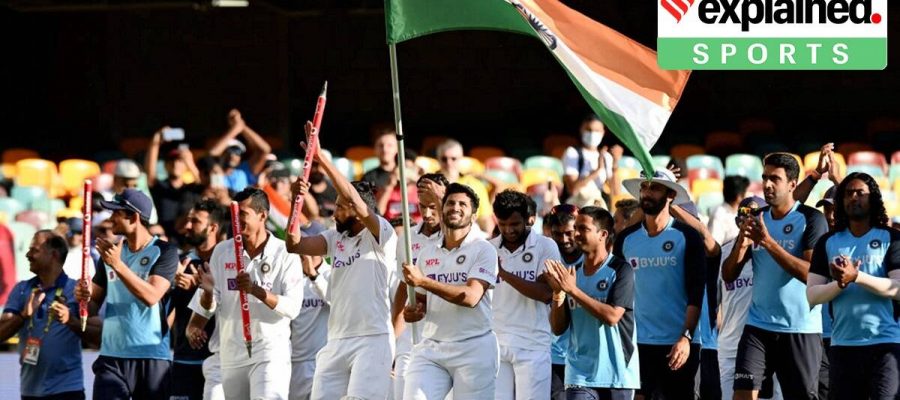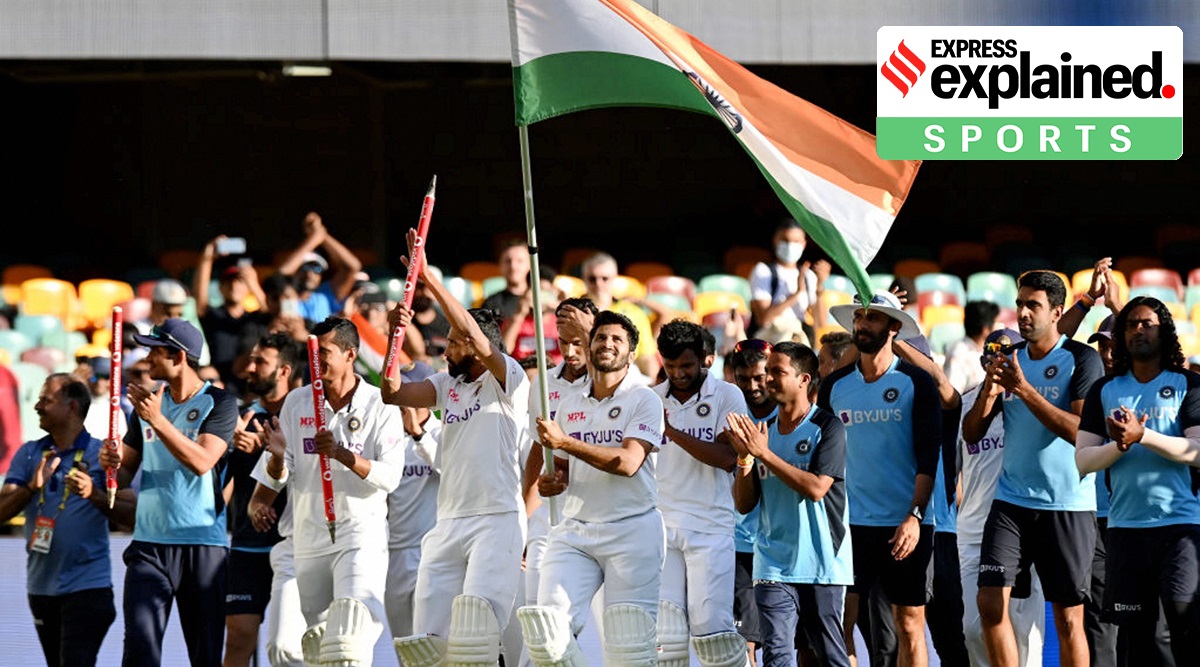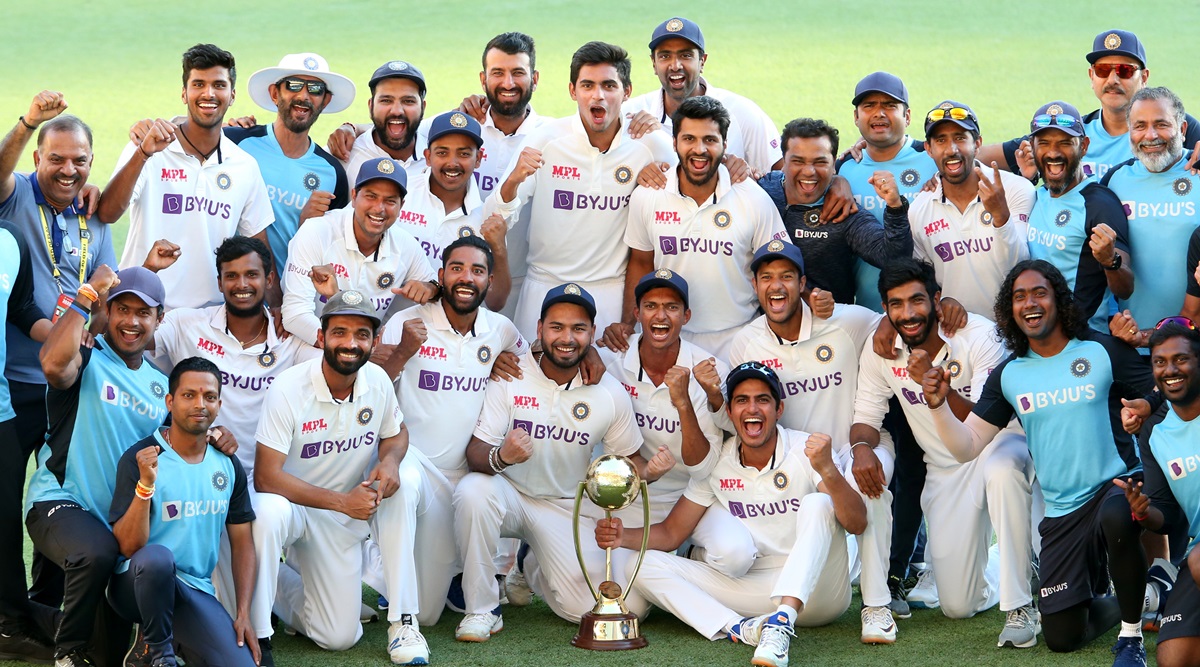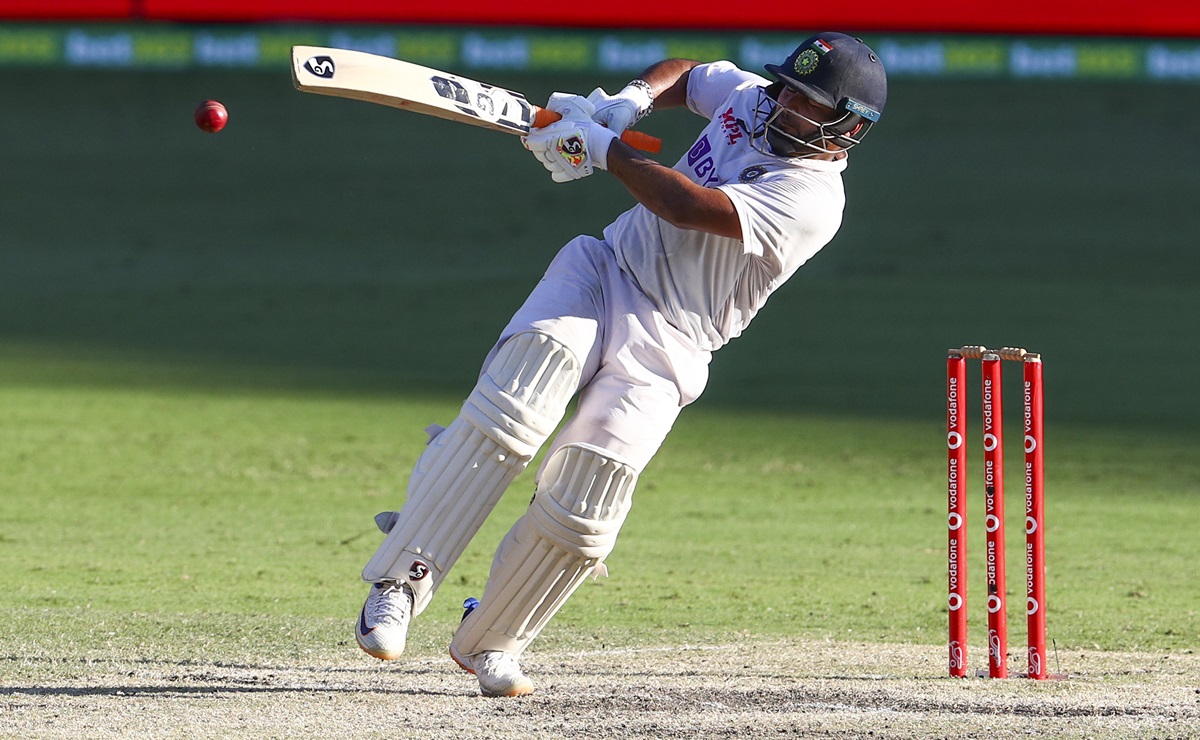India vs Australia: Indian cricket must ensure that Rishabh Pant, Mohammed Siraj, Shardul Thakur and Washington Sundar are not forgotten after the Gabba series.
January 19, 2021 will go down in the annals of Indian cricket as one of its most glorious days — when a cobbled-up bunch, missing most of the biggest stars, trumped Australia at its fortress Gabba to win the second successive series Down Under. If there was an asterisk in the feat achieved two years ago due to the absence of Steve Smith and David Warner, India made light of the various setbacks its suffered to prove that the spirit of youth and a never-say-die attitude can overcome insurmountable odds.
Rishabh Pant was the man of the hour as his match-winning unbeaten knock took India home with three overs to spare on the final day. The seemingly innumerable injuries have also offered a silver lining. India are returning from Australia with two new fast bowlers Test-ready and a young spin-all-rounder having the ability to perform under pressure in the game’s most difficult format. Indian cricket must ensure that unlike Karun Nair; Pant, Mohammed Siraj, Shardul Thakur and Washington Sundar are not forgotten after this series.
What next for Rishabh Pant?
He has answered all his critics in the best possible way, at least with the bat. His 97 in Sydney raised visions of a superb victory, and went a long way in ensuring a heroic draw. At the Gabba on Tuesday, he completed the job by showing immense composure and staying till the end. And if his wicketkeeping is still a work in progress, many experts believe he is good enough to be in the XI as a pure batsman.
How the pace duo has risen to the challenge?
With Ishant Sharma fit, Siraj probably wouldn’t have got into the Test squad for the series Down Under. But for Mohammed Shami’s broken arm in the first Test, he wouldn’t have been in the Playing XI in Melbourne. Siraj is returning home as India’s highest wicket-taker in the Test series — 13 scalps from three matches, including a five-for.
Thakur lasted just 10 balls in his first Test in 2018 against the West Indies before hobbling off. He, too, was an injury-forced selection in Brisbane. Thakur returned with seven wickets from the Gabba Test apart from his heroic 67 runs in the first innings.
Siraj and Thakur, and also T Natarajan, were playing top-flight red-ball cricket in Australia for the first time. Handling the red Kookaburra ball was a challenge, let alone the task of bowling against the likes of Smith, Warner and Marnus Labuschagne. In the past, even some experienced bowlers have struggled to make the necessary adjustments with the Kookaburra ball. Siraj & Co took to the challenge like ducks to water.
Why handling the red Kookaburra ball posed a greater challenge to the newcomers?
The red Kookaburra ball has a pronounced seam which fades away quickly, taking sideways movement in the air out of the equation. Hitting the deck hard becomes important. Fast bowlers are forced to use a lot of shoulder. Also, back muscles take a pounding. And because of the extra bounce on Australian pitches, bowlers have a job adjusting their length to target top of off stump and keep the LBW relevant. Sometimes, even very good bowlers struggle to make the necessary adjustments. In his first tour to Australia, Zaheer Khan had five wickets from two Tests, while Ashish Nehra had four from three. So to put things in perspective, Siraj, Thakur and Natarajan, without any previous Test experience, faced steep odds and they came through with flying colours.
What next for them?
India’s next Test assignment is a four-match home series against England. Conditions will be entirely different and the team is not going to play four fast bowlers. Still, it would be imperative for the selectors and the team management to keep Siraj and Thakur firmly in their scheme of things and give them some game time. It’s not known whether Jasprit Bumrah, Shami and Umesh Yadav will be fit to play against England. Ishant is playing in the Syed Mushtaq Ali Trophy, as also Bhuvneshwar Kumar. But when India have all their frontline fast bowlers available, then also rotation should allow Siraj and Thakur to have game-time. After the fourth day’s play in Brisbane, former Pakistan captain and chief selector Inzamam-ul-Haq called Siraj a “world-class bowler in the making” on his YouTube channel. The Indian cricket hierarchy must ensure that such a talent doesn’t go astray because of a lack of game-time at the highest level.
How will the emergence of Siraj and Thakur help frontline fast bowlers?
A strong backup line will cancel out complacency, if any, and a healthy competition will help top-line fast bowlers’ improvement as well. With the likes of Siraj and Thakur ready and raring to go, the established quartet will strive to raise the bar.
? JOIN NOW ?: The Express Explained Telegram Channel
What about Washington Sundar?
It’s a travesty that the 21-year-old from Tamil Nadu played his last first-class match in 2017 before he became Ravindra Jadeja’s replacement in the fourth Test. Sundar’s batting at the Gabba, the maturity he showed, highlighted the mistake of his state team selectors. Without this opportunity, the spin-allrounder’s exploits probably would have been confined to the limited-overs and franchise cricket cul-de-sac. But now that Indian cricket has unearthed an all-rounder with serious Test potential, it would be essential to wrap him up in cotton wool. Genuine all-rounders are at a premium in Test cricket, but India now have options beyond Ravindra Jadeja and Hardik Pandya. Sundar’s bowling thrives on accuracy. His batting technique is good enough to nullify Australia’s world-class bowling attack. Game-time will accelerate his progress.
Why Karun Nair’s case serves as a lesson?
Nair scored a triple century in his third Test. He was dropped for the very next Test, as fit-again Ajinkya Rahane returned to the side. It was the right decision for that particular game, but why Nair played only three more Tests after scoring a triple hundred is anybody’s guess. He was not picked for India’s tour of South Africa in 2018. The middle-order batsman went to England that year but Hanuma Vihari was preferred over him in the Playing XI. Then, he was dropped for the home series against the West Indies. Nair is now a forgotten man as far as Indian cricket is concerned.
How important is Bharat Arun’s role in the new fast bowlers’ success?
On his Test debut against Sri Lanka in Kanpur 35 years ago, Arun slipped and fell, as he loaded to bowl his first delivery. It brought derisive laughter from a packed house. Those days, youngsters didn’t have the right setup to look after them. They barely had anybody to put an arm around their shoulder. As the Indian team bowling coach, Arun has ensured that the current crop of young bowlers don’t suffer the same fate as him. He mother-hens them. Thakur had been part of Test setup, but Siraj and Natarajan were not in the mix before they played Test cricket in Australia. During a conversation with this paper earlier this month, Arun’s former Ranji team-mate and current Tamil Nadu senior team head coach Diwakar Vasu, however, had exuded confidence that India’s bowling coach would make the new fast bowlers Test-ready.
“Whatever adjustments he (Arun) suggests to a bowler fall within the framework of the basic technique of the bowler. He doesn’t ask them to do anything outlandish; that’s very important. Also, he is a great motivator,” Arun’s former team-mate and the current Indian women’s team head coach WV Raman told The Indian Express.
“They (new pacers) were made to feel that they were capable of performing well at the highest level. He helps getting rid of apprehensions, whatever there could be for a newcomer,” he added.
Source: Read Full Article





